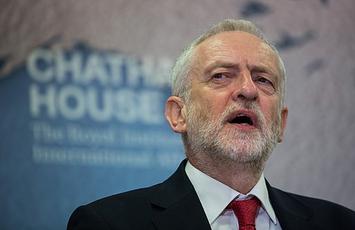
When Donald Trump was elected president, much of American Jewish leadership reacted with something close to hysteria. To some, Trump’s presidency reflected the traditional face of the anti-Semitic right — xenophobic, nationalist and culturally conservative.
Trump’s handling of certain events, notably the Charlottesville white nationalist rally, have revived earlier charges that the president winks at right-wing racist supporters, even considering them part of his base.
The disdain toward Trump in the rabbinical community — often more liberal than congregants — was reflected in its cancellation of the annual New Year (Rosh Hashanah) call with the president. Yet, for all of the justifiable worries about the extreme right, the more consequential threat may well come from the left side of the spectrum.
The European model
I first became aware of this shift almost 15 years ago, when my wife, Mandy, and I visited the famous Nazi hunters, Serge and Beate Klarsfeld, at their offices in Paris. One would expect Serge, whose father died in the concentration camps, to focus his concern on aspiring brown shirts, but, instead, he suggested that the biggest long-term threats would come increasingly from the left and parts of Europe’s expanding Muslim immigrant communities.
Some Jewish groups seem slow to realize how much things have changed since 1940. To be sure, the rise of right-wing nationalism across Europe is frightening, but, increasingly, the primary locus of European anti-Semitism can be found in heavily Muslim communities around cities such as Paris, as well as in Europe’s universities, where anti-Israel sentiments are increasingly de rigueur.
Of course, one can question some Israeli policies — as I do regarding the expansion of settlements — without being an anti-Semite. But the anti-Israel focus of groups like those in the Boycott, Divestment and Sanctions, or BDS, movement clearly represents a new face of anti-Semitism. As the liberal French philosopher Bernard-Henri Lévy argues, this movement targets the Jewish state, but leaves totally unscathed far more brutal, homophobic and profoundly misogynist Muslim states. A double standard for Jews remains an enduring feature of anti-Semitic prejudice.
Some, like the chief rabbi of Barcelona, think it’s time for Europe’s Jews to move away, as many, particularly from France, are already doing. Overall, Europe’s Jewish population is less than half of what it was in 1960.
Nor is the immediate prospectus positive, as many leftist parties in Europe are increasingly dependent on Arab and other Muslim voters, many of whom come from places where over 80 percent of the public holds strongly anti-Jewish views. Even in the United Kingdom, opposition Labor leader Jeremy Corbyn has cavorted openly with leaders of vehemently, and openly, anti-Semitic groups like Hamas and Hezbollah. If elevated to the prime minister’s post — which is no longer inconceivable, given his strong run in the last election — the consequences for Israel and Britain’s dwindling Jewish community could prove difficult.
Read the entire piece at The Orange County Register.
Joel Kotkin is executive editor of NewGeography.com. He is the Roger Hobbs Distinguished Fellow in Urban Studies at Chapman University and executive director of the Houston-based Center for Opportunity Urbanism. His newest book is The Human City: Urbanism for the rest of us. He is also author of The New Class Conflict, The City: A Global History, and The Next Hundred Million: America in 2050. He lives in Orange County, CA.
Photo: Chatham House, London [CC BY 2.0], via Wikimedia Commons












